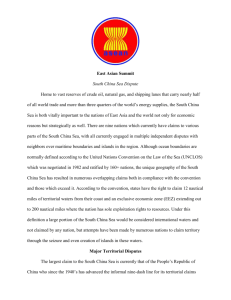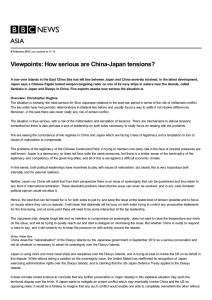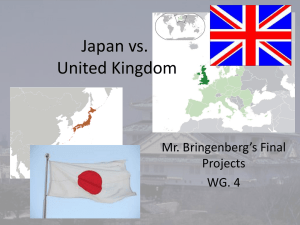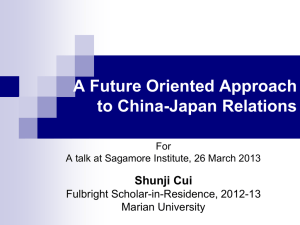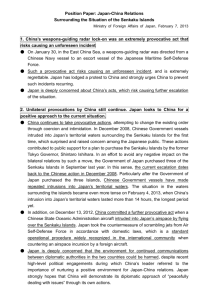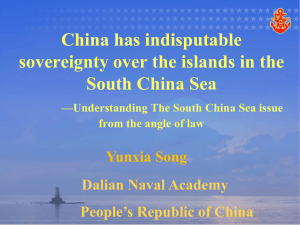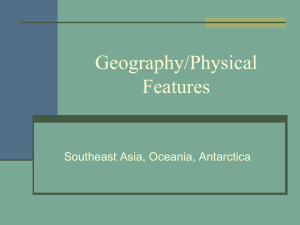Senkaku-Diaoyu Dispute China/Japan/U.S.
advertisement
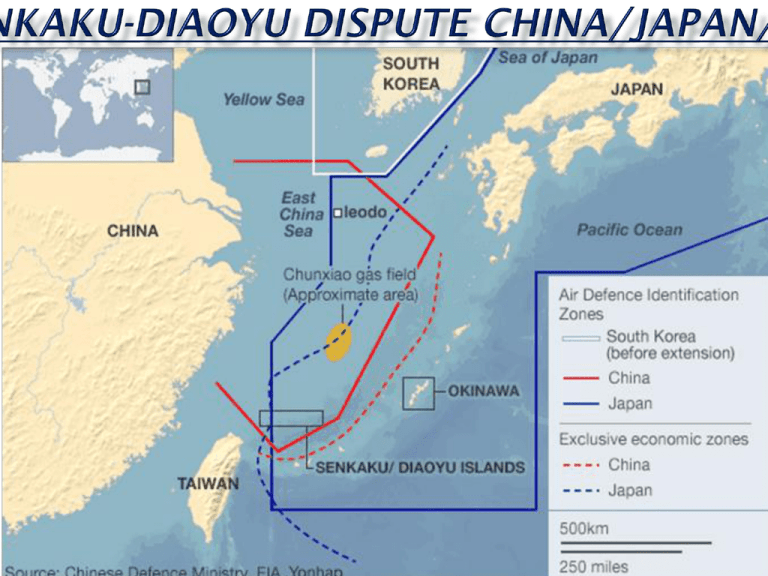
The United States and China clashed over Japan last week as the Chinese defense minister asserted that Beijing had “indisputable sovereignty” over a group of islands in the East China Sea and that his country’s military stood ready to protect its interests in territorial disputes Senkaku(known in Japan)-Diaoyu(known in China) At the heart of the dispute are eight uninhabited islands and rocks in the East China Sea. They matter because they are close to important shipping lanes, offer rich fishing grounds and lie near potential oil and gas reserves. They are also in a strategically significant position, this is because rising competition between the US and China for military primacy in the Asia-Pacific region. Japan says it surveyed the islands for 10 years in the 19th Century and determined that they were uninhabited. In 1895 Japan instituted a sovereignty marker and formally incorporated the islands into Japanese territory. After World War Two, Japan renounced claims to a number of territories and islands including Taiwan in the 1951 Treaty of San Francisco. These islands, however, came under US trusteeship and were returned to Japan in 1971 under the Okinawa reversion deal. Japan says China raised no objections to the San Francisco deal. And it says that it is only since the 1970s, when the issue of oil resources in the area emerged, that Chinese and Taiwanese authorities began pressing their claims. China says that the islands have been part of its territory since ancient times, serving as important fishing grounds administered by the province of Taiwan. Taiwan was ceded to Japan in the Treaty of Shimonoseki in 1895, after the Sino-Japanese war. When Taiwan was returned in the Treaty of San Francisco, China says the islands should have been returned too. Beijing says Taiwan's Kuomintang leader Chiang Kai-shek did not raise the issue, even when the islands were named in the later Okinawa reversion deal, because he depended on the US for support. The US and Japan forged a security alliance in the wake of World War II and formalized it in 1960. Under the deal, the US is given military bases in Japan in return for its promise to defend Japan in the event of an attack. This means if conflict were to erupt between China and Japan, Japan would expect US military back-up. US President Barack Obama has confirmed that the security pact applies to the islands - but has also warned that escalation of the current row would harm all sides. Last week Defense Secretary Chuck Hagel visited China and had a joint press Conference with Minister General Chang Wanquan formally answering questions about the island dispute. General Chang made his comments at the Ministry of National Defense. This was Defense Secretary Hagel’s first trip to China as defense secretary. The visit was critical to international cooperation because according to American defense officials, they have sought to present a long-awaited deepening of military relations between the countries. The minister, Gen. Chang Wanquan, said that China would not be first to launch an attack over the territorial dispute. He continued, “The Chinese military can assemble as soon as summoned, fight any battle and win.” “China has indisputable sovereignty over the Diaoyu Islands,” General Chang said. He added that on the issue of what he called “territorial sovereignty,” China would “make no compromise, no concession, no treaty.” At one point, Mr. Hagel appeared impatient, saying, “The Philippines and Japan are longtime allies of the United States,” Mr. Hagel accused China of adding to tensions in the region by declaring an air defense zone in the East China Sea. Such moves, he warned, could “eventually get to dangerous conflict.” Late last year, China set off a trans-Pacific uproar when it declared that an “air defense identification zone” gave it the right to identify and possibly take military action against aircraft near the islands. Japan refused to recognize China’s claim, and the United States has since defied China by sending military planes into the zone, unannounced. The dispute over the islands also figured prominently last week at the New York debut of the Asia Society Policy Institute, a nonpartisan research group created by the Asia Society. China’s ambassador to the United States, Cui Tiankai, participating in a panel on Asian peace and prosperity firmly warned the United States about taking sides with Japan. Without identifying Japan by name, Mr. Cui said America should think hard about whether its military alliances with other countries in Asia were serving American interests. William J. Burns, the deputy secretary of state, said in a keynote speech at the event that the island dispute and North Korea’s behavior were the two most serious security issues facing Asia.. Going forward, Mr. Burns said, “no region will be more consequential for American interests and for the shape of the global system than the Asia Pacific.” The Senkaku/Diaoyu issue highlights the more robust attitude China has been taking to its territorial claims in both the East China Sea and the South China Sea. In both China and Japan, meanwhile, the dispute ignites nationalist passions on both sides, putting much political capital risk on the U.S. part and ultimately making any possible resolution even harder to find. There might not be a conclusion anytime soon but there is no certain timetable when this could be resolved. NYTIMEShttp://mobile.nytimes.com/2014/04/09/worl d/asia/united-states-and-china-clash-overcontested-islands.html BBC- http://www.bbc.com/news/world-asiapacific-11341139

